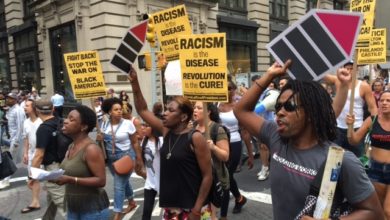Photo credit — Chris Hani Institute
April 10 marks the 30th anniversary of the assassination of Chris Hani – an indispensable leader to the revolutionary movement in South Africa against apartheid, colonialism, and imperialism. Mass gatherings are taking place throughout South Africa to remember his legacy.
Hani was born June 28, 1942 in the rural town of Cofimvaba. Many people in this small rural town were mostly migrant workers and peasants, including his parents. Hani grew up in a momentous period of revolutionary upsurge across Africa that aimed to decolonize the continent and build socialism. At the time of his assassination, he held the post of General Secretary of the South African Communist Party and had also served as the Chief of Staff of Umkhonto we Sizwe – the armed struggle wing of the SACP and African National Congress. Today, Hani is revered as a revolutionary icon of a similar stature as Nelson Mandela or Walter Sisulu.
His involvement with underground organizing, guerilla struggles and popular mass movements made him a hero to millions but a hated enemy of the apartheid government of South Africa and extreme right-wing elements. A year before South Africa held its first democratic, multi-party elections in 1994, Chris Hani was shot down on his driveway by Januzs Walus, an anti-Communist Polish refugee affiliated with the neo-Nazi militia Afrikaner Resistance Movement (AWB). Walus was outrageously released from prison last year – Hani’s family and the SACP denounced this move and continue to call for an investigation that reveals the full truth behind the assassination.
Here are six key facts about the life of this people’s hero.
1. In 1956, Hani joined the African National Congress and a year later, joined the ANC Youth League, organizing activities underground at the age of 15. This came shortly after the apartheid government introduced the Bantu Education Act, which deepend the extreme inequality in the quality of education available to the African population.
2. Hani joined the South African Communist Party in 1961, which was banned by the apartheid regime and had to operate illegally. A year later, he joined the military wing of the struggle, “Umkhonto we Sizwe” (“Spear of the Nation”).
3. Hani was persecuted under the Suppression of Communism Act and went underground. During this time, he traveled to the Soviet Union alongside other young MK soldiers to undergo military training in 1963. 27 years would pass before he could return to South Africa legally.
4. During Hani’s time in exile, he took on an active role in the armed struggle, fighting alongside other African liberation movements as well. Hani served as a Political Commissar in the Zimbabwe People’s Revolutionary Army and as part of a combined unit of the Umkhonto we Sizwe and ZIPRA. Hani deeply admired the soldiers’ commitment to the liberation struggle.
5. By 1982, Hani rose through the ranks of the ANC and became an elected member of its National Executive Committee. The following year, he became the Political Commissar of the Umkhonto we Sizwe, training youth in exile – many of whom were recruited after the landmark 1976 Soweto uprising.
6. Hani returned to South Africa in 1990 after the unbanning of ANC and SACP. He spent the last years before his assassination touring South Africa, organizing the people for the next phase of the struggle against colonialism and capitalism. He addressed village meetings, trade union assemblies, and other mass gatherings to raise people’s political consciousness and put forward radical demands.




